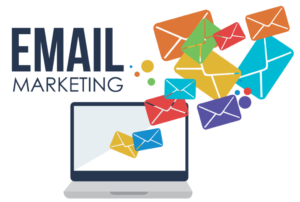
Email Marketing: The Timeless Tool for Digital Engagement
In the fast-paced world of digital marketing, trends come and go—but email marketing continues to stand strong as one of the most effective and reliable strategies for reaching an audience. Despite the rise of social media, paid ads, and content marketing, email marketing remains a key pillar for businesses looking to connect with their customers in a direct and personalized way.
At its core, email marketing is the practice of sending targeted messages to a group of people via email. These messages can be anything from promotional offers and newsletters to product updates, event invitations, or even automated welcome sequences. What makes email marketing so powerful is its ability to build and maintain relationships with customers over time.
Unlike social media platforms where algorithms control visibility, email gives businesses complete control over how and when they communicate with their audience. When someone subscribes to an email list, they’re inviting that brand into their personal inbox—a space that feels more intimate and trustworthy than a social feed full of distractions.
Another key strength of email marketing is personalization. With the right tools, businesses can segment their audience based on behavior, preferences, location, or past purchases. This means recipients get messages that feel tailor-made for them, increasing engagement and boosting conversion rates. For example, a clothing brand can send winter jacket promotions to customers in colder regions while showcasing summer wear to those in warmer areas.
Email marketing is also highly cost-effective, especially for small businesses. Compared to traditional advertising or paid digital campaigns, emails are relatively inexpensive to send, and platforms like Mailchimp, ConvertKit, or ActiveCampaign make it easy to create professional, automated campaigns without needing technical expertise.
Automation plays a major role in modern email marketing. Marketers can set up drip campaigns, which are sequences of emails sent based on user actions. For instance, after someone downloads a free guide, they might receive a series of follow-up emails introducing products or services related to that topic. These automated flows help nurture leads without constant manual effort.
But success in email marketing doesn’t come from simply sending emails. It requires strategic planning, compelling content, and thoughtful design. The subject line needs to spark interest, the copy should be clear and persuasive, and the call-to-action must guide the reader toward the desired outcome—whether it’s making a purchase, signing up for an event, or reading a blog post.
Importantly, trust and consent are essential in email marketing. With regulations like GDPR and CAN-SPAM, marketers must ensure they’re only contacting people who’ve opted in to receive messages. Respecting privacy and providing easy unsubscribe options aren’t just legal requirements—they’re also good business practices that build long-term trust.
In conclusion, email marketing isn’t just surviving—it’s thriving. It’s a timeless tool in the digital marketer’s toolkit, offering unmatched control, personalization, and ROI. When done right, it transforms simple messages into meaningful connections, turning subscribers into loyal customers and curious leads into brand advocates.
